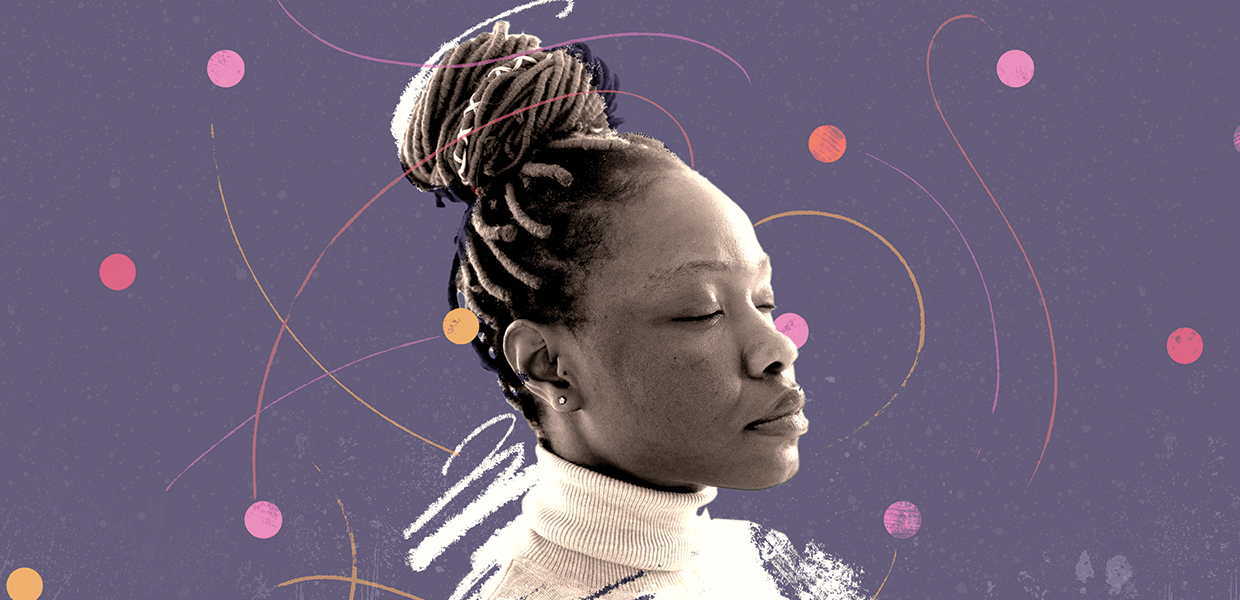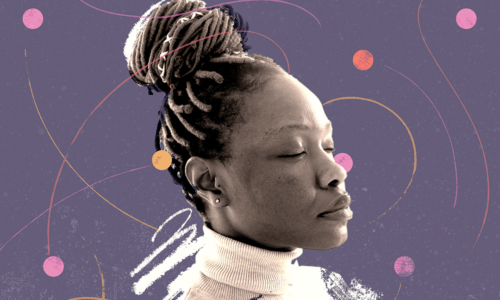10 October 2022

Over the past few years Scottish Ensemble has developed an emphasis on projects that links music with wellbeing, starting through work with Maggie’s Centre’s, a charity that provides free cancer support and information in centres across the UK. Over time that work has expanded, taking in work with schools and teachers and it has also been a theme of recent public programming including Pause back in 2018, the 2021 edition of Breathe, Common Sound and now this autumn’s Breathe tour as well.
We spoke to our CEO Jenny Jamison to find out more about this part of Scottish Ensemble’s work.
Scottish Ensemble: How did the work with Maggie’s Centre’s first come about?
Jenny Jamison: We first collaborated with Maggie’s Centres when we visited the amazing centre in Dundee during a residency we held in the city in 2016. We were looking to create stronger links with people across the city, and had built a couple of days’ activities based in and around Ninewells Hospital, looking to bring patients (and staff!) some uplifting moments. The team at the Maggie’s Centre were really responsive when we suggested bringing some live music to the centre, and things have grown from there – we’ve now visited every centre in Scotland. The buildings themselves are total sanctuaries – and I’ll never forget the first time I walked into the centre in Dundee which was designed by Frank Gehry – it’s a special place.
SE: Can you describe what a typical Maggie’s session is like? What makes it special?
JJ: A typical session lasts between 60 and 90 minutes. We work closely with the staff at the centres to make sure the room and group are comfortable, and that everyone knows a little of what to expect. We then spend some time ‘settling in’ – lots of the Maggie’s Centres run mindfulness courses, and we’ve often worked with those groups, so some techniques are informed by mindfulness practice. Over the course of a session, we perform three to five pieces of music and, in between each one, both the performers and listeners share how the music makes them feel. I know that one of the things that makes the sessions special for our musicians is that they get to hear first-hand how their music has affected people – that’s a very personal, intimate moment. Often as performers you’re looking out at a sea of faces – at Maggie’s, this is replaced with immediate individual reactions – and it can often be very emotional.
SE: What have the impacts of the sessions been?
JJ: I’ll never forget one person telling me that when they were listening to the music it was the first time for months that they had forgotten about the pain they were in. And another saying that sitting listening to music made them feel ‘normal’ for the first time in ages. The impact is different for every individual; just like it is in a traditional performance environment, but when people are encouraged to speak about how the music it makes them feel, I think it’s possible to connect with what the impact has been on you in a different way – even if you really didn’t connect with a particular bit of music, you can use that in a certain way to process other emotions.
"Often as performers you’re looking out at a sea of faces – at Maggie’s, this is replaced with immediate individual reactions - and it can often be very emotional."
SE: Where else has this sort of work been taken?
JJ: We’re now developing similar formats that combine live performance and discussion into our work in schools. Alongside collaborators from Maggie’s we’ve delivered some training for school teachers to explore how they can use music in classrooms for wellbeing purposes, and we’re about to release a video series called ‘Breathe for Schools’ – bite size videos that we hope will be enjoyed by teachers and their classes across Scotland and beyond to help carve out a few moments for reflection and calm in a busy school day.
SE: How did this work cross over into the main concert series?
JJ: We got thirsty for the kind of personal and intimate reactions we experienced in our Maggie’s sessions! In all seriousness, I think this stemmed from a desire to actively explore what our music making means to the audiences we connect with, and to see how far we can develop a performance format that prioritises asking audiences explicitly to explore how their mind, body and soul feels when they are listening to music.
Though we’d started this work before the pandemic, I think we also all recognise now that the urgency of tackling mental health and wellbeing has got much more acute. Music can help us to feel and process complex emotions and we want to make sure there are parts of our programme that channel that power.
"Music can help us to feel and process complex emotions and we want to make sure there are parts of our programme that channel that power"
SE: Can you tell us a little about what audiences can expect from the Breathe tour later this month?
One of our viola players, Andrew Berridge, has curated a musical journey through different moods, and everything about the performance is designed to enhance that journey. The performers will be configured in different ways throughout the show, you’ll see their interactions up close, you’ll feel the vibrations of their instruments, and lighting will bring us from a calm hush to a sense of bright joy. Andrew will guide us through the evening – asking you to consider how you feel physically and how the music affects you mentally. There will be a chance to hear from the musicians – and they’d love to hear from you (though it’s not compulsory – you can just relax and listen in!). It’s a chance literally to breathe deeply and take some time out for yourself.
SE: Last autumn the Common Sound tour explored that interaction between music, performer and audience. In your job you see and hear music performed both ‘alone’ in rehearsal and also with audiences. Does listening together change how we feel about it or how we experience it do you think?
JJ: I don’t think I would do the job I do if I didn’t think there was something truly breath-taking and significant that happens when you’re in a live performance with other people. For me, the silence before a piece of music starts, the collective breath at the end of a spectacular performance, the sense of awe for performers who have just given everything, absolutely changes your experience of the music. Listening with others and feeling people around you reacting to something with you is powerful and life-affirming.
SE: Lastly, how do you personally take time to ‘Breathe’?
JJ: I dance. For me, music is often/always part of finding a sense of balance and wellbeing; if I can find time to go to a dance class and focus my mind solely on the music and choreography, I feel instantly freer. Or going out in the rain…that always helps too!
Follow the link here to find out more about the performance and listen to the accompanying playlist.
